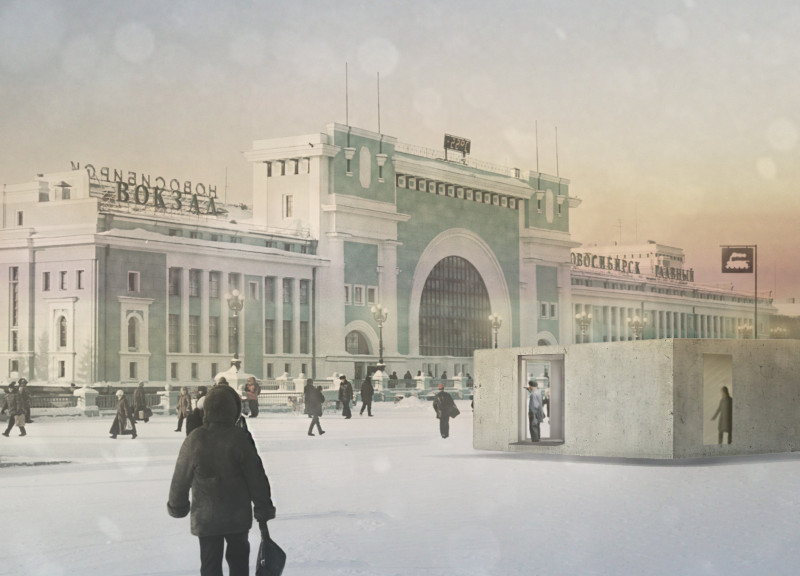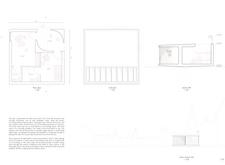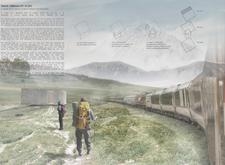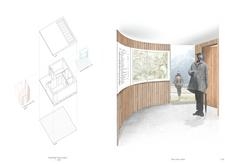5 key facts about this project
# Analytical Report on the Trans-Siberian Pit Stops Architectural Design Project
## Project Overview
Located along the Trans-Siberian railroad, the design caters to the practical needs of travelers, offering essential facilities that serve both tourists and local communities. The proposal prioritizes functional architectural forms that are compatible with the diverse and challenging environments encountered throughout the railway route, ensuring both accessibility and integration into the surrounding landscape.
## Design and Spatial Configuration
The architectural layout features a modular structure to facilitate ease of transport and adaptability to various locations along the railway. The design philosophy emphasizes humility and simplicity, reflecting the Siberian landscape's character. A non-hierarchical form encourages community interaction and acts as a connective element among different regions served by the railway.
The composition is organized into three main areas: an entrance and information area that provides essential travel details, a tourist shop and storage unit that includes necessary amenities, and an accommodation space for travelers to rest. This layout strategically supports the flow of movement while addressing the needs of those stopping along the way.
## Material Characteristics
The choice of materials focuses on resilience and connection to the regional context. Cast concrete, the primary material, mirrors the rugged nature of Siberia while symbolizing the challenges of travel and construction in the area. The roof features an organic cut to invite natural light into the interior, enhancing the spatial experience.
Interior acoustic dampening is achieved through horizontal wooden slats, which serve a dual function of improving sound quality while contributing to the minimalist aesthetic. This careful selection of materials reinforces the project’s commitment to simplicity and functional beauty, facilitating a modest interaction with the surrounding environment.
A notable design feature is the ability to orient the structure dynamically on-site, allowing adaptation to varying climatic conditions, which enhances the overall functionality of the facilities. The project fosters community engagement by successfully merging essential services with an appealing architectural presence, addressing the needs of traveling individuals as well as local residents along the railway corridor.






















































